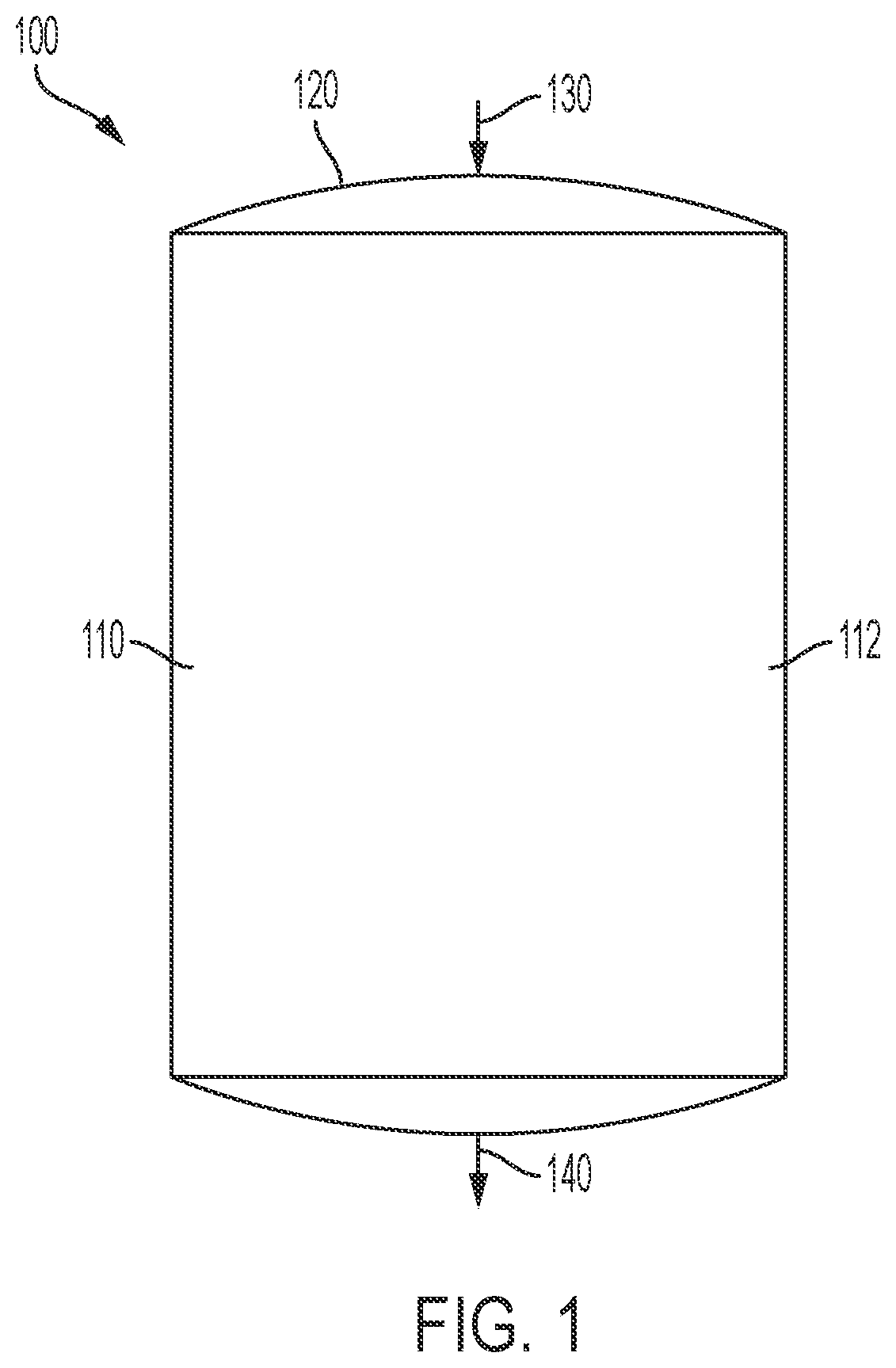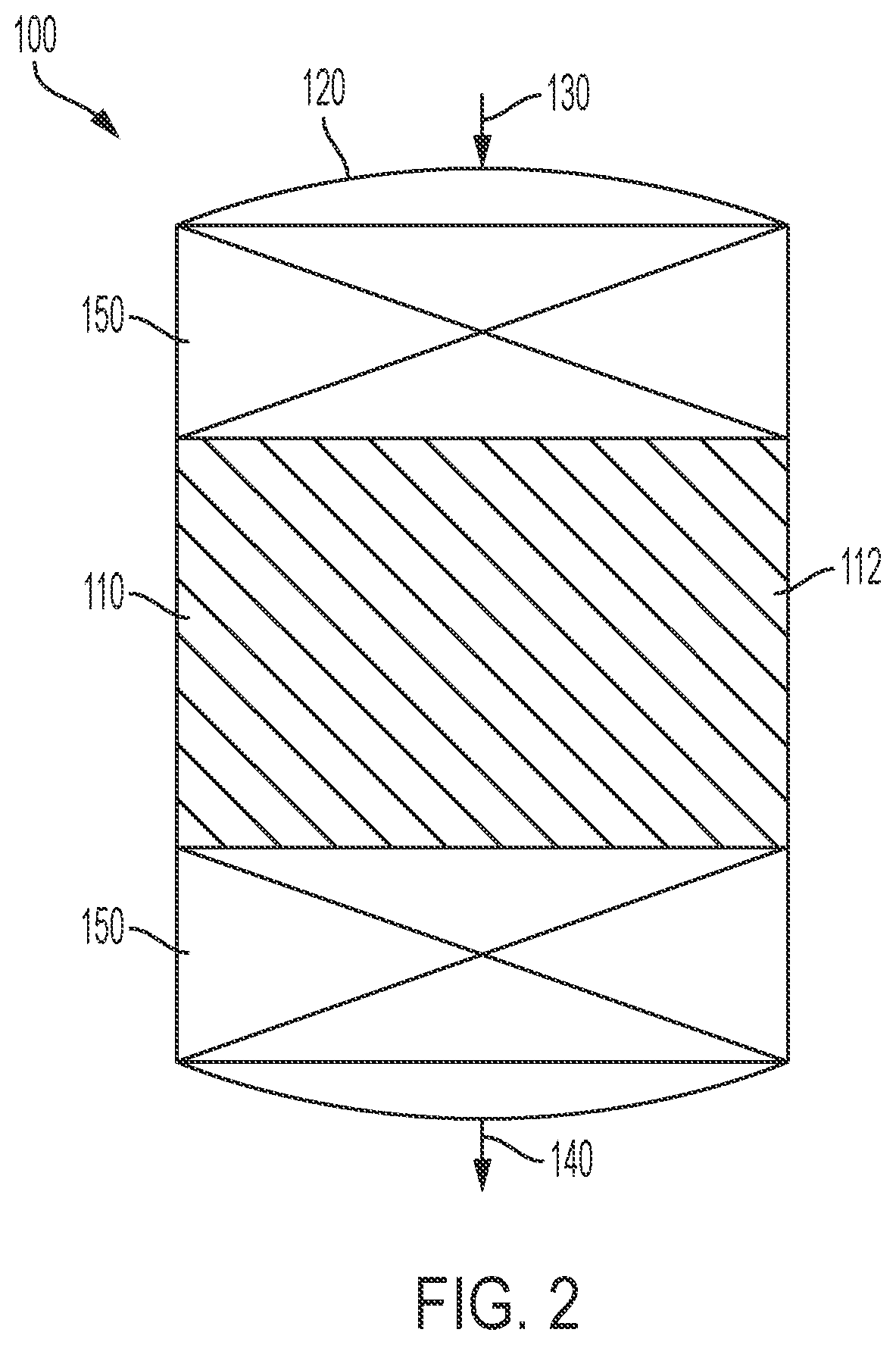Methods of producing isomerization catalysts
- Summary
- Abstract
- Description
- Claims
- Application Information
AI Technical Summary
Benefits of technology
Problems solved by technology
Method used
Image
Examples
Example
Comparative Example 1-Hydrothermal Synthesis of MgO
[0052]An isomerization catalyst was prepared using hydrothermal synthesis. In particular, 18.02 grams (g) of urea (Alfa Aesar) and 15.39 g of magnesium nitrate hexahydrate (Mg(NO3)2.6H2O) (99%, Sigma-Aldrich) were dissolved in 100 milliliters (mL) of deionized water (DI water) and rapidly stirred at room temperature for 1 hour to form a first solution. Cetrimonium bromide (CTAB) (Sigma Aldrich, ≥98% purity) was then added to the first solution such that the molar ratio of magnesium to cetrimonium bromide in the first solution was 1:0.03, and the first solution was stirred at room temperature for 2 hours to form a catalyst precursor solution. The pH of the catalyst precursor solution was then adjusted to a pH of 11 by the dropwise addition of concentrated ammonium (28-30% NH3 basis). The catalyst precursor solution was then transferred to an autoclave and placed in an oven at 120° C. for 72 hours at a ramp rate of 1 degree Celsius pe...
Example
Inventive Example 2—Sulfuric Acid Leached Hydrothermally Synthesized MgO
[0053]The isomerization catalyst precursor of Comparative Example 1 was further leached with a sulfuric acid solution. Specifically, the isomerization catalyst precursor of Comparative Example 1 was soaked in 1M H2SO4 for 15 minutes. The resulting white precipitants after the acid solution soaking were then filtered from the solution via vacuum filtration (Whatman filter paper, 400), dried overnight at room temperature, and then dried in a vacuum oven at 80° C. for 24 hours to form a isomerization catalyst precursor precipitant in accordance with the present disclosure. The isomerization catalyst precursor precipitant was then calcined in a calcination oven under air at a ramping rate of 1° C. / min until the isomerization catalyst precursor precipitant attained a temperature of 550° C. The isomerization catalyst precursor precipitant was then maintained in the calcination oven at a temperature of 550° C. for 5 ho...
Example
Comparative Example 3—Hydrochloric Acid Leached Hydrothermally Synthesized MgO
[0054]The isomerization catalyst precursor of Comparative Example 1 was further leached with a sulfuric acid solution. Specifically, the isomerization catalyst precursor of Comparative Example 1 was soaked in 1M HCl for 15 minutes. The resulting white precipitants after the acid solution soaking were then further processed according to the same methods as Inventive Example 2. The isomerization catalyst prepared according to the above-described method is referred to subsequently as the catalyst of Comparative Example 3.
PUM
| Property | Measurement | Unit |
|---|---|---|
| Temperature | aaaaa | aaaaa |
| Temperature | aaaaa | aaaaa |
| Time | aaaaa | aaaaa |
Abstract
Description
Claims
Application Information
 Login to View More
Login to View More - R&D
- Intellectual Property
- Life Sciences
- Materials
- Tech Scout
- Unparalleled Data Quality
- Higher Quality Content
- 60% Fewer Hallucinations
Browse by: Latest US Patents, China's latest patents, Technical Efficacy Thesaurus, Application Domain, Technology Topic, Popular Technical Reports.
© 2025 PatSnap. All rights reserved.Legal|Privacy policy|Modern Slavery Act Transparency Statement|Sitemap|About US| Contact US: help@patsnap.com



